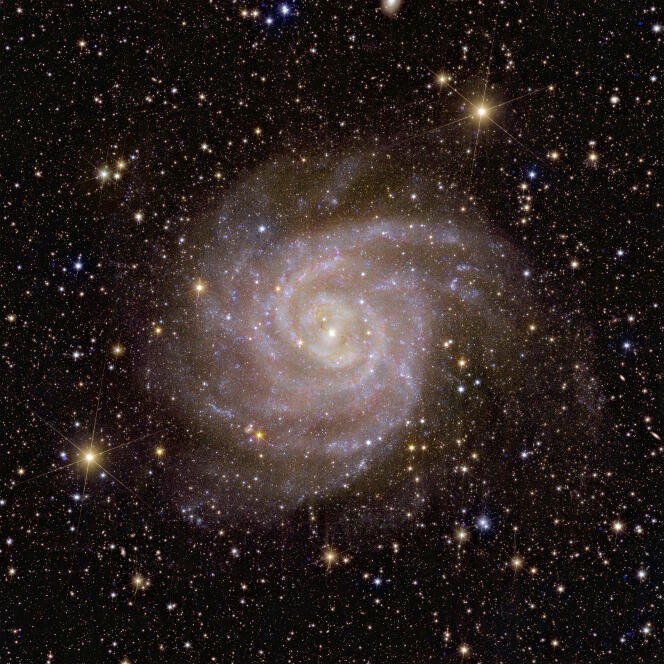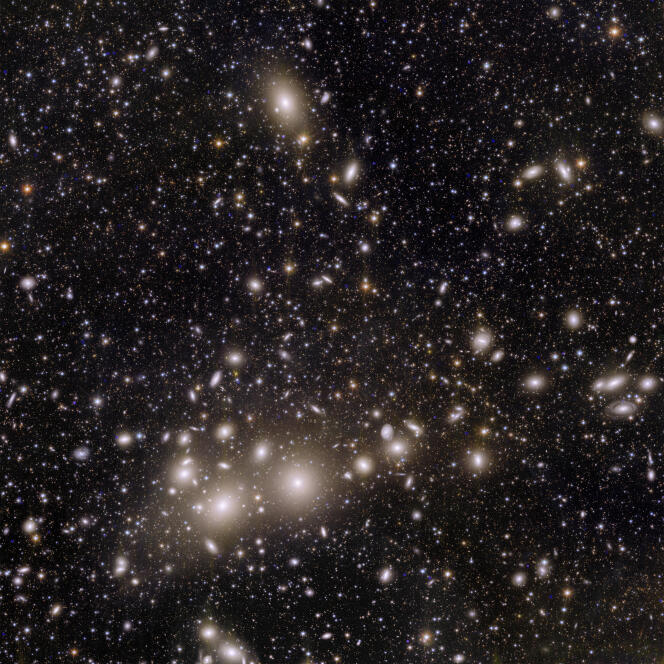


The Perseus cluster of galaxies, the famous Horsehead Nebula in the constellation Orion, the beautiful spiral galaxy IC 342, the irregular galaxy NGC 6822 and a globular cluster of stars located in the Milky Way 7,800 light-years from Earth: These are the subjects of the first five color photographs taken by the European Space Agency's (ESA) Euclid satellite and unveiled on Tuesday, November 7. They were not five close-up portraits, but rather five landscapes. Euclid's main characteristic is to take wide-field images, unlike the Hubble or James Webb Space Telescopes, which focus their gaze on tiny portions of the sky.
Launched on July 1 from Cape Canaveral, Florida, the cosmology satellite, whose mission is to track down dark matter and dark energy – two mysterious entities that form 95% of the Universe – has still not entered its operational phase. It took a month to reach its final destination, the 2nd Lagrange point, a stable zone in space 1.5 million kilometers from the Earth, on the opposite side of the Sun. This is where the James Webb Space Telescope is also located. The next step was to check that the device and its instruments were working properly, with all its challenges.
The ESA was disappointed to discover that, at times, Euclid's fine guidance system, disturbed by protons from the Sun, was losing its guide stars, which had the effect of destabilizing the device and producing images where the stars appeared to be looping. To put things right, a corrective patch had to be written and uploaded to the satellite.
Another area of concern for researchers was the phenomenon of ice deposition. As Francis Bernardeau, an astrophysicist at the French research laboratory CEA and deputy head of the Euclid scientific consortium, which brings together more than 250 laboratories worldwide, explained, "the water contained in the satellite's materials evaporates and re-condenses on the instruments. This is a problem encountered by every space imager, which is very difficult to assess and model. But in this case, with Euclid, we're better off than we thought."

The researchers and engineers who remotely monitor the satellite are now in the process of evaluating its performance. This is crucial, as Euclid is aiming for extremely high image quality in order to study the distribution of dark matter and draw up the largest three-dimensional map of the Universe. The gamble appears to have paid off, according to Bernardeau: "As far as image sharpness is concerned, we're well up to expectations. The trick will be to maintain this quality over the six years of the mission." Nevertheless, the images revealed on November 7 reveal the presence of strange bluish spots. "These are ghost images due to the inevitable imperfections of the optical system," explained the CEA researcher. "But once everything is calibrated, we'll be able to clean them up."
You have 40% of this article left to read. The rest is for subscribers only.
